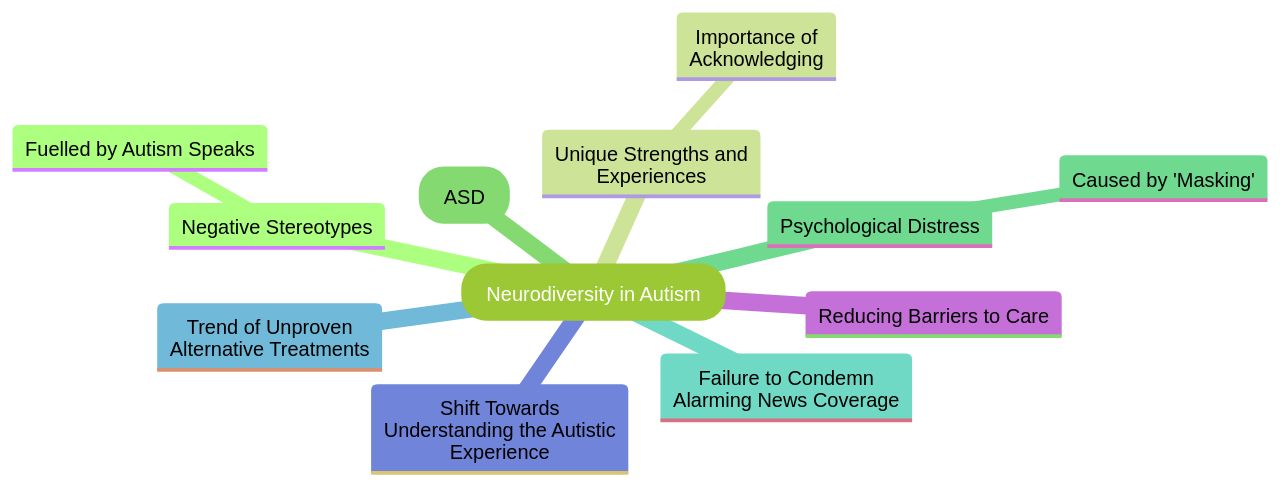Introduction
The puzzle piece emblem, a prominent symbol for autism awareness, carries with it a rich and contentious history that has stirred discussions within the autism community. This symbol represents the evolving understanding of autism, its diagnosis, and the societal perception surrounding it.
As the definition of autism expands and evolves, so too does the debate surrounding it. This article explores the origins of the puzzle piece symbol, the controversies surrounding Autism Speaks, the implications of the puzzle piece as a symbol of ableism, and the need to redefine the autism narrative with a focus on acceptance and inclusivity. Join us as we delve into these important topics and strive to better understand and support the autistic community.
The Origins of the Autism Puzzle Piece
The puzzle piece emblem, a prominent symbol for autism awareness, carries with it a rich and contentious history that has stirred discussions within the autism community. This simple, multi-hued icon, often rendered in shades of blue, belies the intricate tapestry of experiences and perspectives that it represents.
It's not just a symbol, but a testament to the evolving understanding of autism, its diagnosis, and the societal perception surrounding it. The past two decades have seen a 700% surge in autism diagnoses, with a recent study estimating that one in 36 eight-year-old children are on the spectrum.
This significant increase, however, is not solely due to a rise in the incidence of autism. Rather, it reflects broadened diagnostic criteria, heightened awareness, and a shift in societal attitudes towards autism, driven in part by advocacy groups and increased media coverage.
While it was once believed that three in four autistic individuals had an intellectual disability, current findings suggest that only one in four do. This shift points to a growing recognition of the diverse ways autism can manifest, including a heightened understanding of how it presents in women and girls. Yet, as the definition of autism expands and evolves, so too does the debate surrounding it. Some argue that autism should be understood not just as a disability, but also as a distinct aspect of one's personality, a perspective that challenges traditional medical models. In this light, the puzzle piece symbol becomes a reflection of these ongoing dialogues, a symbol of a community that is as diverse and complex as the individuals it represents.

The Birth of Autism Speaks
Autism Speaks, a prominent organization in the realm of autism advocacy, has been the epicenter of numerous controversies since its inception in 2005. Initially, the organization positioned autism as a condition requiring a cure, a stance that has evolved over time.
By 2016, their focus shifted towards the development of a prenatal test for autism, a move that drew comparisons to past eugenic practices. Their media portrayals have also been contentious.
The 9-minute film, 'Autism Every Day,' was criticized for its portrayal of family challenges, including a disturbing statement by a parent about thoughts of harm directed at her autistic child, made in the child's presence. Similarly, the short film 'I Am Autism,' released in 2009, anthropomorphized autism as a life-altering entity, making controversial claims about its impact.
More worrying is the organization's alleged failure to condemn alarmist news coverage of crimes committed by individuals with autism, as evidenced by a 2014 incident in Maryland where an autistic teenager was brutally attacked. This lack of condemnation has prompted debates about the organization's impact on public perception.
Concurrently, there has been a concerning trend of parents exploring alternative treatments for their autistic children, some without scientific validation. The organization's financial allocation has also raised eyebrows. A significant portion of their budget is dedicated to fundraising and executive compensation, with only a small fraction spent on direct services for families affected by autism. Critics argue that Autism Speaks attempts to overshadow the voices of autistic individuals, particularly when these individuals form their own advocacy groups. The organization's marketing strategies are largely tailored towards parents of autistic children, a tactic shaped by the founders' extensive media industry experience.

The Controversy Surrounding Autism Speaks
The controversy surrounding Autism Speaks extends beyond its quest for a cure for autism. Critics argue that the organization's narrative inadvertently fuels negative stereotypes and overlooks the valuable insight offered by autistic individuals and their families. The organization's focus on curing autism undermines the importance of understanding and acknowledging the unique strengths and experiences of autistic individuals.
This is especially crucial considering 1 in 45 adults in the U.S. are diagnosed with Autism Spectrum Disorder (ASD). In the face of societal stigma, many autistic individuals resort to 'masking,' adopting behaviors to blend in with their non-autistic peers. This can often be a response to societal criticism and can lead to significant psychological distress.
Furthermore, Autism Speaks has been criticized for its failure to publicly condemn alarming news coverage of heinous crimes committed by autistic individuals, fueling misperceptions and fear around autism. This is particularly concerning as it coincides with a trend where parents of autistic children resort to unproven alternative treatments. Such controversies highlight the need for a shift in approach towards autism.
Instead of focusing on a cure, efforts should be directed towards understanding the autistic experience and reducing barriers to care. This involves recognizing the potential strengths common to autism, such as a strong sense of justice and fairness, and deep expertise in specific subject areas. Moreover, it underscores the need for more inclusive practices in the society that celebrate neurodiversity and foster a sense of belonging for autistic individuals.

The Puzzle Piece as a Symbol of Ableism
The puzzle piece, often associated with autism, has sparked controversy due to its perceived implications of incompleteness and imperfection. A study published in the UK's National Autistic Society's Autism journal found that participants linked the puzzle piece symbol with a sense of oddity and deficiency.
The journal proactively responded to these findings by replacing their puzzle piece logo with a design featuring circles. This move mirrors a wider shift within the autism community towards symbols like the rainbow infinity sign, which better encapsulates the notions of acceptance and inclusion.
Much like the Deaf community's ongoing efforts to visually represent their unique identities, the autism community is also grappling with symbolizing their experiences in a way that is both respectful and representative. Meanwhile, the shift from 'Autism Awareness Month' to 'Autistic Acceptance Month' is a significant step towards celebrating and recognizing the autism community.
However, it's crucial that this acceptance extends beyond just one month and translates into long-term, tangible support for autistic people, such as inclusive workplace practices and better representation. The neurodiversity movement emphasizes that autism is a natural variation of the human brain rather than a disorder.
It calls for supportive environments that accommodate autistic people's unique needs and strengths, rather than trying to 'fix' them. However, it's important to acknowledge that the challenges faced by autistic people are real and require appropriate support. Finally, it's worth noting that societal acceptance of autism remains a global issue. A survey of 306 autistic individuals from eight countries found that only 23.5% felt accepted by society. This suggests the need for a collective effort towards improving societal acceptance and understanding of autism.

Redefining the Autism Narrative
The narrative surrounding autism has been shifting in contemporary discussions, with a growing emphasis on acceptance over mere awareness. The importance of centering autistic individuals in these dialogues is now recognized, as they hold the most authentic understanding of their experiences. This transformation has ignited discussions about the need for more inclusive and respectful strategies in autism advocacy.
In the United States, around 5.4 million adults and 1 in 36 children have been diagnosed with autism. Their experiences with the condition are diverse, but their talents and potential are frequently misunderstood or overlooked. Autistic individuals often encounter unnecessary barriers to employment and healthcare, and children with autism regularly face bullying and educational obstacles.
There is an imperative need to address these disparities and ensure equal opportunities for autistic individuals to achieve their aspirations. This includes ensuring that they, and those who support them, have the necessary resources and tools to communicate, grow, work, and achieve greater independence. Early diagnosis can significantly impact an individual's journey, highlighting the importance of funding research to enhance access to diagnosis and services that can support autistic individuals of all ages.
Ensuring that young children with disabilities, including autism, have access to high-quality, inclusive early childhood programs is also crucial. The conversation around autism has evolved over the years. Prof Sir Baron-Cohen, director of the Autism Research Center at Cambridge University, suggests that we should view autism through both the medical and social models of disability.
Some characteristics of autism are strengths and talents, such as excellent attention to detail, pattern recognition skills, and a preference for depth over breadth. In conclusion, it's clear that the narrative surrounding autism is changing, focusing more on acceptance and acknowledgment of the unique experiences and potential of autistic individuals. It's crucial that this shift in understanding continues to evolve, promoting a more inclusive and respectful approach to autism advocacy.

Conclusion
The puzzle piece emblem, a symbol for autism awareness, represents the evolving understanding of autism and its societal perception. Controversies surrounding organizations like Autism Speaks have sparked discussions about the need for acceptance and inclusivity in the autism community. Critics argue that Autism Speaks' focus on a cure undermines the importance of accepting and understanding autistic individuals.
The puzzle piece as a symbol has faced criticism due to its perceived implications of incompleteness. The narrative surrounding autism is shifting towards acceptance over mere awareness, with a focus on centering autistic individuals in discussions. It is crucial to address disparities and provide equal opportunities for autistic individuals.
In conclusion, the narrative surrounding autism is changing towards acceptance and acknowledgment of the unique experiences and potential of autistic individuals. It is our collective responsibility to promote inclusivity, respect, and support in our advocacy efforts. By doing so, we can create a society that embraces neurodiversity and ensures the well-being of all individuals on the autism spectrum.




